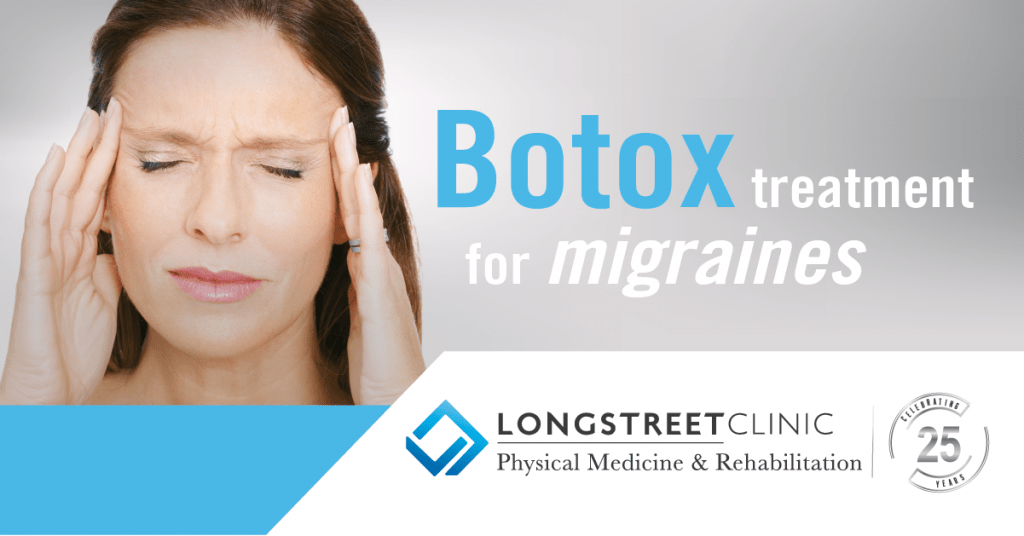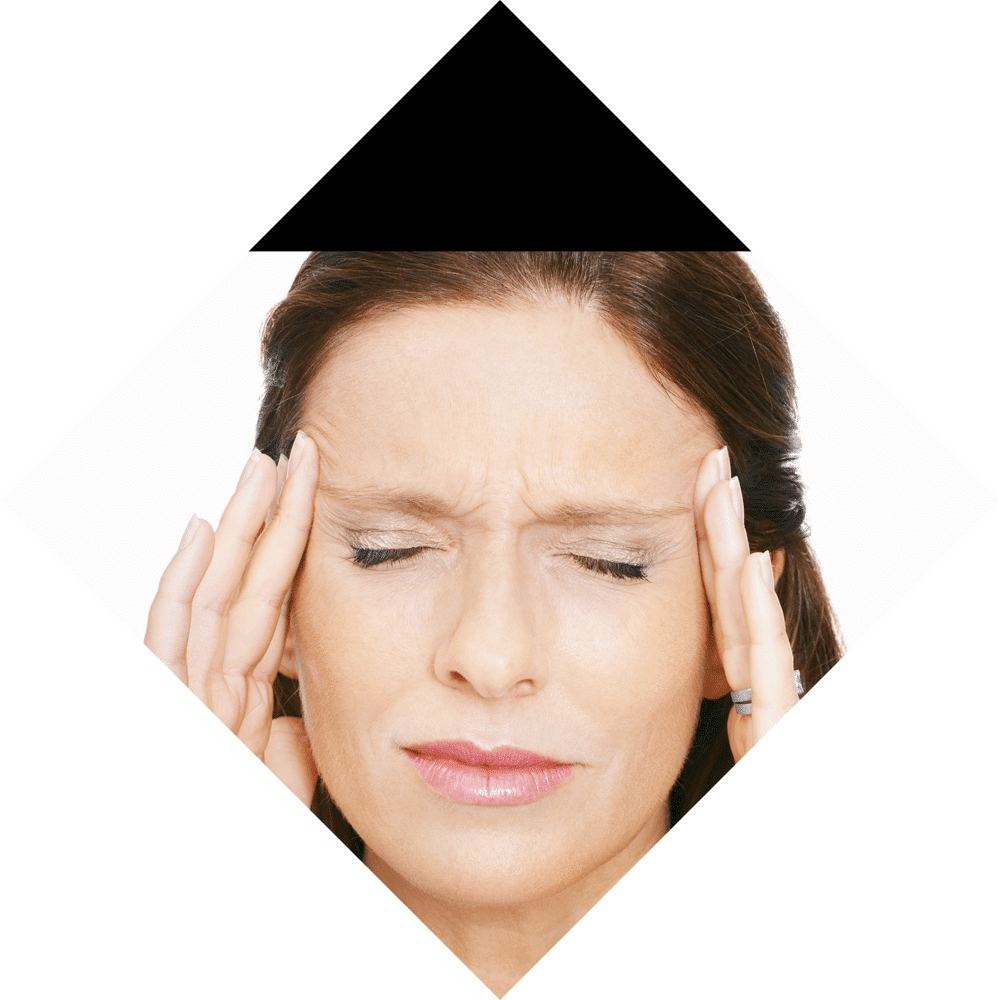The onset of migraine headache symptoms is enough to drive fear into the stoutest of hearts.
Severe head and neck pain – which can pulsate and throb or simply pound away for hours on end – often combine with nausea and vomiting, and light and sound sensitivity, to create a truly horrific experience for sufferers, forcing them to retreat from life for hours or days at a time.
Those who suffer from chronic migraine headaches – defined as 15 days or more a month with some sort of headache symptoms, eight of which are associated with migraines – may find themselves despairing as they resign themselves to a life of consistent pain and discomfort. And while oral medications may provide some relief, these remedies may carry their own side effects and concerns.
Longstreet Clinic physician Britta A. Okyere, M.D., wants you to know that even if you find yourself spiraling through this scenario, which happens to an estimated 2 percent of the population, there is reason for hope – and it is called Botox.
Yes, Botox, the same treatment made famous for cosmetic care, is also a powerful tool in the fight against migraines. And it can offer sufferers a chance to regain some normalcy in their lives.
“I’ve seen Botox make a huge difference for patients,” Dr. Okyere said. “When I meet a patient in this situation, they’re often in crisis mode, and this can help them to reclaim functionality.”

Who is a candidate for treatment?

“Any patient with chronic migraines may be a candidate for Botox treatment,” Dr. Okyere said. “And it has been around as a migraine treatment for 10 years, so it has lots of trials and research behind it.”
Indeed, Botox has been shown to prevent, on average, 8-9 days of headache days and probable migraine attacks per month.
“It is a safe protocol, but it often goes under the radar for migraine sufferers; they don’t realize they have this opportunity,” said Dr. Okyere, a physical medicine & rehabilitation specialist (also known as a physiatrist) with Longstreet Clinic, who is certified to administer Botox injections for migraine prevention. “And while it may not completely cure your migraines, it can give you a lot fewer days with headaches, and it also significantly curtails migraine symptoms.”
How does Botox for migraines work?
Botox, an injectable protein produced by the bacterium Clostridium botulinum, disrupts the flow of pain-signaling transmissions between the head/neck and the central brain – where migraines originate.
“It prevents the chain-reaction of pain receptor inflammation that is set off by a migraine,” Dr. Okyere said. “And that’s why it does more than just reduce the pain; it also decreases the sensory issues associated with migraine, so you don’t have to sit in a quiet, dark room just to gain some relief.”
While this is not a cure for migraines, it is a welcome relief for many patients who, while they may still experience headache, experience more pain-free days and are better able to perform and function on the days when they do experience symptoms.
It is a prospect of hope for those who experience the incapacitations of chronic migraines.
What is treatment like?
Receiving Botox treatments is also a relatively simple procedure.
“It really only takes about 15 minutes,” Dr. Okyere said.
Patients receive a set of injections every 12 weeks. These injections are targeted on the seven main muscle groups migraines affect, and while the procedure may impart some minor pain and soreness, patients are free to resume their normal lives as soon as the procedure is complete.
The only drawback is that Botox is not a fast-acting analgesic, often requiring two or more treatment sessions to truly impart relief for the patient. However, the treatment is generally well-tolerated in all patients – though it is not approved for children under 18, and not recommended for pregnant women or women who will become pregnant in the three months following treatment.
Botox treatments are also covered by insurance (subject to any co-insurance or deductibles required by your plan), after a medical history of migraines has been established.
“From what I’ve seen, Botox treatment is something that is certainly worth pursuing if you’re in consistent pain,” Dr. Okyere said.
To take the next step, Dr. Okyere recommends you talk to your primary care provider about your migraine pain and begin the process of seeking relief. To contact Dr. Okyere’s office on Longstreet Clinic’s Gainesville campus, please call 770-536-6300 or click here to send us an email.

